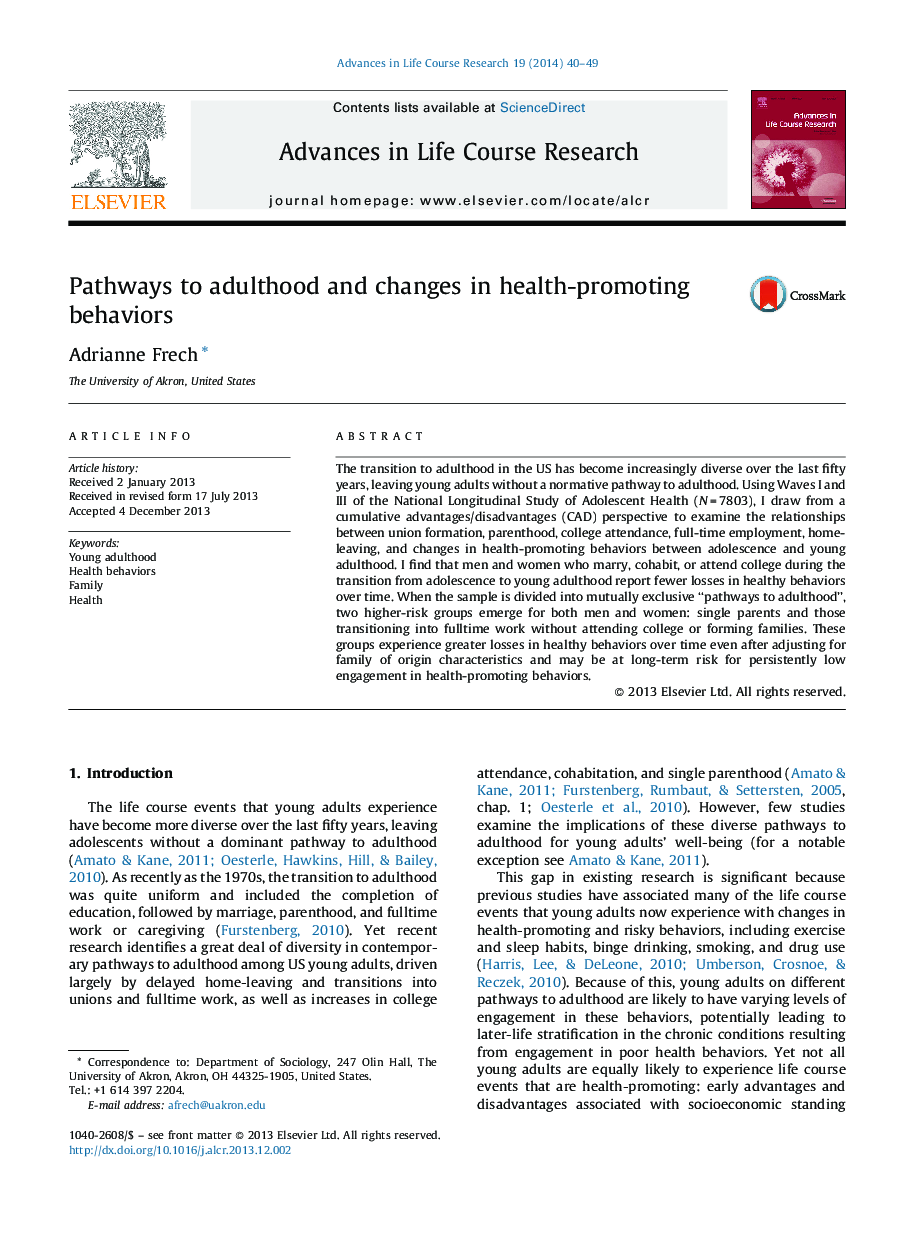| کد مقاله | کد نشریه | سال انتشار | مقاله انگلیسی | نسخه تمام متن |
|---|---|---|---|---|
| 313722 | 534529 | 2014 | 10 صفحه PDF | دانلود رایگان |
The transition to adulthood in the US has become increasingly diverse over the last fifty years, leaving young adults without a normative pathway to adulthood. Using Waves I and III of the National Longitudinal Study of Adolescent Health (N = 7803), I draw from a cumulative advantages/disadvantages (CAD) perspective to examine the relationships between union formation, parenthood, college attendance, full-time employment, home-leaving, and changes in health-promoting behaviors between adolescence and young adulthood. I find that men and women who marry, cohabit, or attend college during the transition from adolescence to young adulthood report fewer losses in healthy behaviors over time. When the sample is divided into mutually exclusive “pathways to adulthood”, two higher-risk groups emerge for both men and women: single parents and those transitioning into fulltime work without attending college or forming families. These groups experience greater losses in healthy behaviors over time even after adjusting for family of origin characteristics and may be at long-term risk for persistently low engagement in health-promoting behaviors.
Journal: Advances in Life Course Research - Volume 19, March 2014, Pages 40–49
